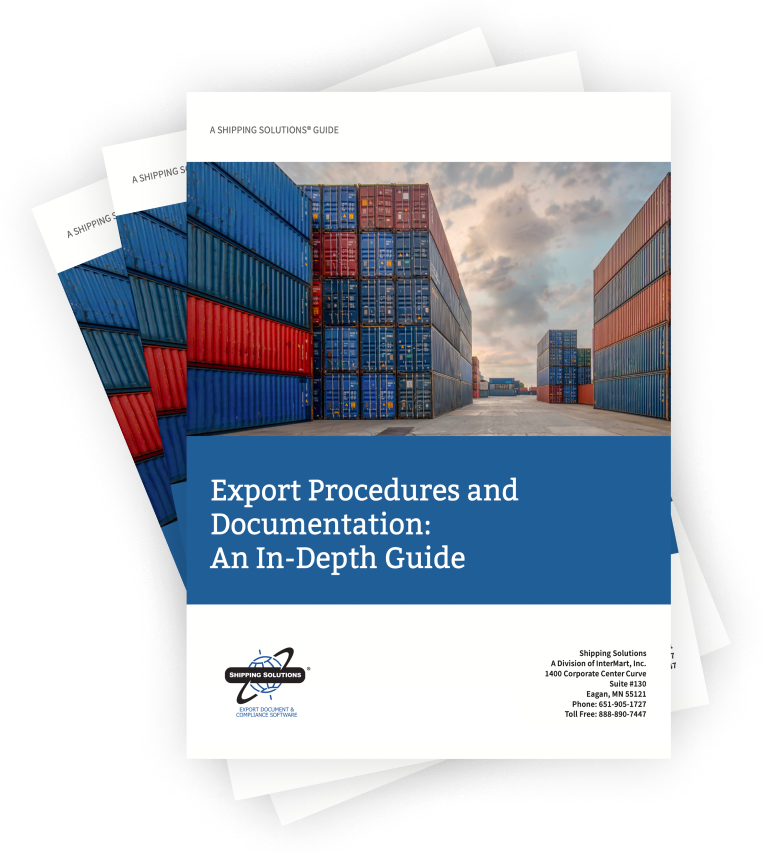The International Trade Blog International Sales & Marketing
Should You Care about Country of Origin Impact?
On: August 24, 2015 | By:  Prema Nakra |
8 min. read
Prema Nakra |
8 min. read
 Imagine for a moment that the $95 dress shirt you are wearing today was actually produced for a large upscale retailer in the United States by a mega company based in Hong Kong (China). On further research you find that the shirt was actually manufactured in Singapore with fabric from Pakistan and buttons from Japan.
Imagine for a moment that the $95 dress shirt you are wearing today was actually produced for a large upscale retailer in the United States by a mega company based in Hong Kong (China). On further research you find that the shirt was actually manufactured in Singapore with fabric from Pakistan and buttons from Japan.
Better still, it could have been manufactured in any of 25 countries where this Hong Kong-based company has branches. This is a truly global shirt that has probably traveled farther than many of us involved in international trade.
This scenario sheds light on the fact that in the current state of globally integrated supply chains, knowledge about the country of origin or country of manufacture is not as transparent. The logical question that follows is: Does the country of origin still have an impact on product quality, on perception and acceptance?
In this article I will address the issue of Country of Origin (COO) and how it influences the buyer decision making process.
Understanding the Country of Origin Effect
If you are a seasoned business decision maker you probably remember the early days of Japanese cars and consumer electronics when the products originating from Japan were seen in a far less favorable light than they are today. The common perception at the time was that if the product originated in Japan it had to be cheap stuff! Gradually over the past four decades, the quality of Japanese engineering began to be appreciated and the big Japanese manufacturers changed from "me too" manufacturers of cheaper products to global brand and technology leaders.
Fast forward to the 21st Century, and you will notice that a key market battle in the consumer electronics industry is now being fought between Japanese and Korean brands. Twenty years ago Korean VCRs and microwave ovens scored substantially below German and Japanese brands on all product attributes including quality. Today the story may be quite different.
Country of origin is defined as the country with which a particular product or service is associated. The country could be the country of manufacture (COM), in the case of products, or the country where the headquarters are located, in the case of both products and services. Country of origin effect (COE) can be defined as any influence that the country of manufacture, assembly or design has on a consumer’s positive or negative perception of a product. However, the concept of country of origin is increasingly complex.
For products manufactured using components made in various countries and assembled in yet other countries, determining the true country of origin of the product is becoming increasingly difficult. For example, BMW cars targeted for the U.S. market are manufactured in South Carolina rather than in Bavaria; Michelin tires are also manufactured in South Carolina; and many software products used by U.S. businesses are developed in India.
As a result of the expansion of multinational firms, companies sell the same products under identical brand names in different countries throughout the world. These products actually have widely differing national origins, not necessarily that of the COO of the parent company. Sony products, for example, can just as easily be “made in Japan,” “made in France,” or “made in Italy.”
The question remains: Does COO still matter?
Country of Origin Effect Still Matters
Country of origin information constitutes a product trait that is external to the product itself. It serves as a surrogate for product quality, performance, reliability, prestige and other product characteristics that cannot be directly evaluated.
Research has demonstrated that consumers tend to regard products that are made in a given country with consistently positive or negative attitudes. These origin biases seem to exist for products in general as well as for specific products, and for both end-users and industrial buyers alike. The nature and strength of origin effects depend on such factors as the product category, the product stimulus employed in the research, respondent demographics, consumer prior knowledge and experience with the product category, and consumer information processing style.
Country image and perceptions that influence consumer evaluation of product quality, risk, likelihood of purchase, and other mediating variables are formed through a myriad of experiences and information acquired by consumers. Familiarity with a country's products, shopping behavior, demographics and psychographics all affect the buyer perceptions. These perceptions have been shown to depend on the type of manufacturing process (product design versus product assembly) as well as the level of technological complexity (complex versus simple product).
Country of origin biases have been found for both developed countries and less developed ones. Generally speaking, products from lesser developed countries are perceived to be riskier and of lower quality than products made in more developed countries. In general, products manufactured in highly industrialized countries are perceived as being of higher quality and having greater prestige than those manufactured in developing countries.
Consumers from highly developed countries tend, in general, to evaluate their own country’s products more favorably than products from other countries. The opposite is true for consumers in developing countries and newly industrialized countries who rate their own country’s products as inferior to products from developed countries.
Once customers are aware of COO, their familiarity with the brand, level of involvement in the purchasing decision, and existing preference with domestic products becomes relevant, as do product and market level influences such as type of product and brand image.
Product categories in which COO is generally given greater importance include perfumes, wines, cars, high-fashion clothes, consumer electronics and software. For all these products, country specific stereotypes exist. COO effects are less pronounced in products in which technology is widely diffused across the globe. These products adopt a quality standard that is uniform across the globe, hence country of origin does not have a significant impact.
Stereotypes Abound
Throughout the COO research studies one finds a relatively small number of stereotypical images that are fairly consistent across nationalities: the image of the robustness of German products, the image of France being associated with luxury products, and the image of Korean products as being cheap. Positive image stereotypes are also held in the world for Iranian pistachios and rugs, Polish vegetables, Israeli oranges, Columbian coffee, English tea, Swiss chocolate and Russian Caviar, French perfume, Chinese silk, Italian leather, Japanese Electronics and Jamaican Rum.
All are stereotypical perceptions based on experience, hearsay or myth. Some research studies also indicate that consumers in different countries respond differently to country-of-origin cues. Here are some examples:
- Japanese goods are rated favorably by consumers in all countries.
- Canadian goods, although often thought comparable to American goods on performance characteristics, are considered technologically imitative.
- In China, if it is western it is in demand, even at prices three or four times higher than domestic products.
- Korean consumer electronic and automobile brands are much more appreciated in Asia but have not yet translated into a strong positive country of origin effect for the rest of the world where its products are marketed.
- For Russians, country of origin is more important than the brand name as an indicator of quality. Goods produced in Malaysia, Hong Kong or Thailand, are still suspect in Russia.
- People from Australia might like French perfume but not French cameras or even French wine since Australia produces heavier wines.
In the absence of other product information, the country of origin of a product or service affects consumers’ evaluation of that product or service. Along with other extrinsic cues such as brand name and warranty, COO information is used by consumers to reduce the inherent uncertainty associated with the purchase of products. As they acquire additional information the country-of-origin impact is reduced.
Dealing with Country of Origin Stereotypes
Marketing managers must understand COO perceptions as they relate to the product category in target-country markets. They must deal with the stereotypical myths by providing information and developing marketing strategies appropriate to achieve corporate goals. COO and COM effects have implications for standardization of marketing programs, for positioning the products, selecting the image in advertising, and even plant location decisions.
Here are some recommendations for dealing with COO-related stereotypes:
Know What to Stress in Your Marketing Communications
In the event that country of origin has negative connotation for their products, multinationals often decide to de-emphasize manufacturing origin and emphasize country of brand. When Volkswagen first started building its Rabbit model in Pennsylvania in the 1970s, consumers rushed to buy the last imports of the model from Germany. Following its global transplants, the company has avoided emphasizing where the product is actually made. For example, Daimler-Benz emphasizes its corporate home rather than country of origin while promoting its products.
In the United States, Colombian coffee is touted as a certification of quality. Toblerone chocolate stresses its European origins despite the fact that it is a Philip Morris (Kraft Jacobs Suchard) brand. Haagen-Dazs chocolate-dipped ice cream is really a product produced locally in the United States although its name suggests an association with Europe, which affirms the quality association with European chocolate.
Promote National Pride
Feelings of national pride—the Buy American effect, for example—can influence attitudes toward foreign products. Honda, which manufactures one of its models entirely in the United States, recognizes the phenomenon and continues to point out how many component parts are made in America in some of its advertisements.
Emphasize Product Quality or Value Rather than Price
Marketers have a tendency to reduce prices to counter the negative COO. This strategy always backfires because it reinforces the existing negative prejudices that the product is cheap and of lower quality. It is better to invest in developing a better product at a reasonable price rather than a better product at a lower price to overcome negative country of origin effect. Developing relationships with reputable dealers and/or intermediaries also reduce the impact of negative COO or COM effect.
Experience shows that it is possible to change the consumer mind-sets and perceptions over time. For example, Japanese marketers over the last 50 years have substituted an image of high quality for the cheap image that was generally held in the 1950s and 1960s. The image of Korean electronics improved substantially in the United States once the market gained positive experience with Korean brands. Strong global corporate brands like Sony, General Electric and Levi’s developed via effective positioning. Integrated marketing has done wonders for both marketers and customers in reducing the impact of mythical country of origin stereotyping.
Final Words
The country, the type of product, the image of the company, and company’s brand all have an effect on whether the country of origin will engender a positive or negative reaction. It is important to remember that even though negative COO effects do not disappear overnight, country perceptions do change over time. The key is to develop market strategies to reinforce the positive COO impact and de-emphasize the negatives. Develop quality products, building solid relationships with quality distributors, and promote the corporate brand image.
Like what you read? Subscribe today to the International Trade Blog to get the latest news and tips for exporters and importers delivered to your inbox.
This article was first published in March 2006 and has been updated to include current information and formatting.

About the Author: Prema Nakra
Prema Nakra, Ph.D. is an educator, economist and a marketing consultant. Dr. Nakra is a professor of marketingand International Business and MBA Program Director at the School of Management, Marist College. Her academic qualifications include a Ph.D. in economics, MA in economics, and MBA in marketing management.
Prior to joining Marist, Dr. Nakra worked for international organizations including the International Cooperative Alliance for South East Asia, Ellington Duval Inc, Worldwide Marketing Group, and the New School for Social Research. An active member of American Marketing Association, American Economic Association, and Balanced Scorecard Technology Council, she is frequently invited to presents papers and at international business conferences.




